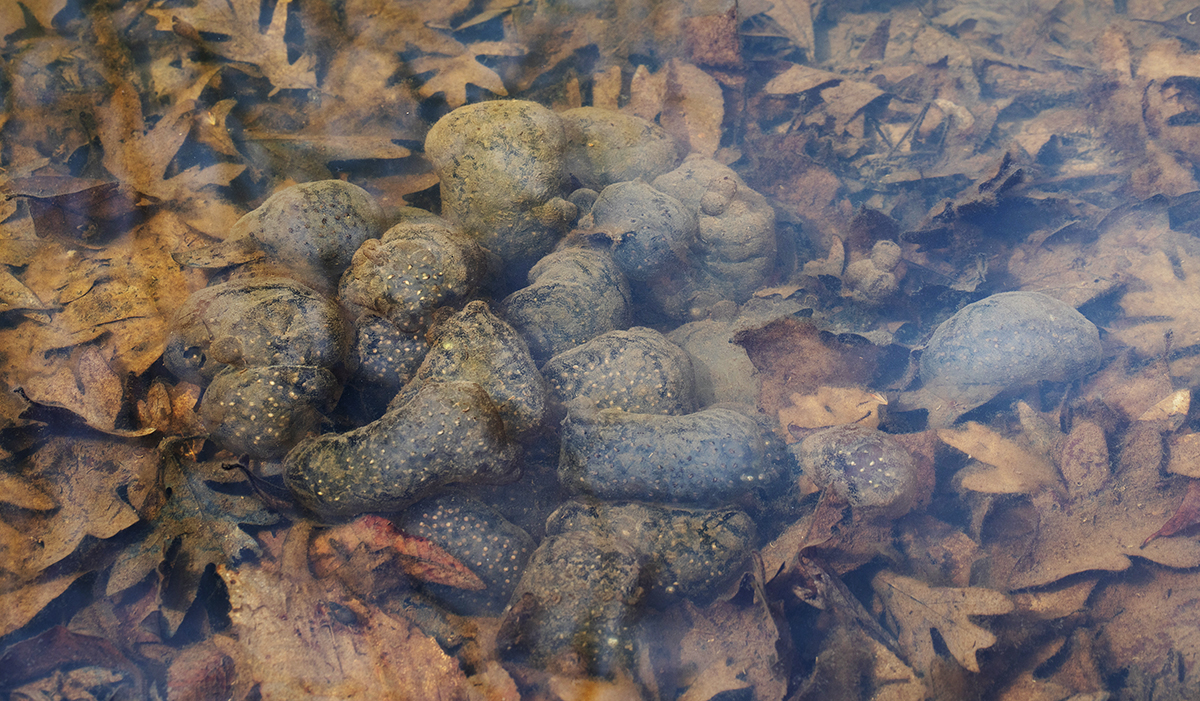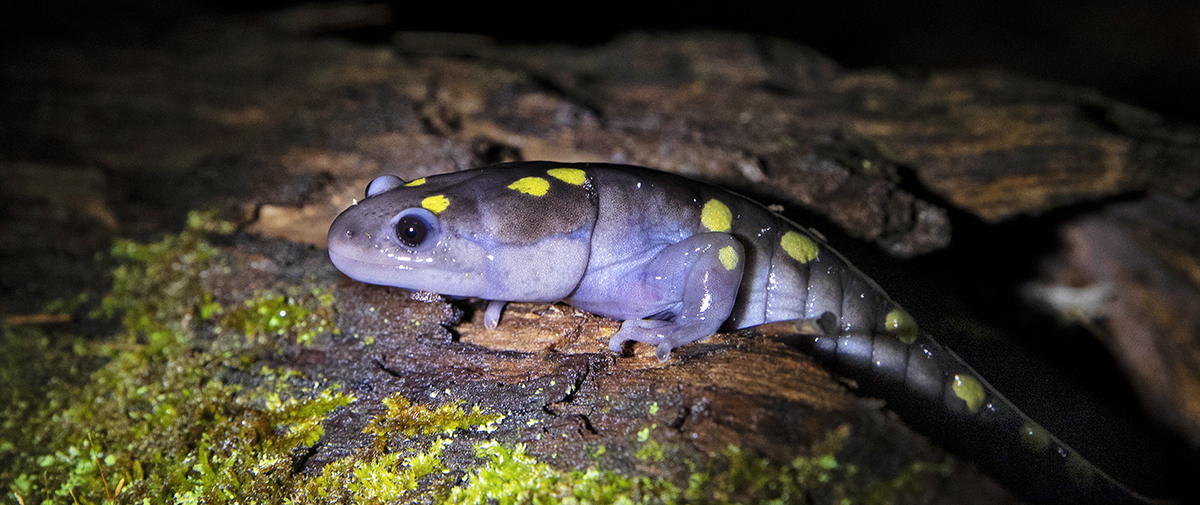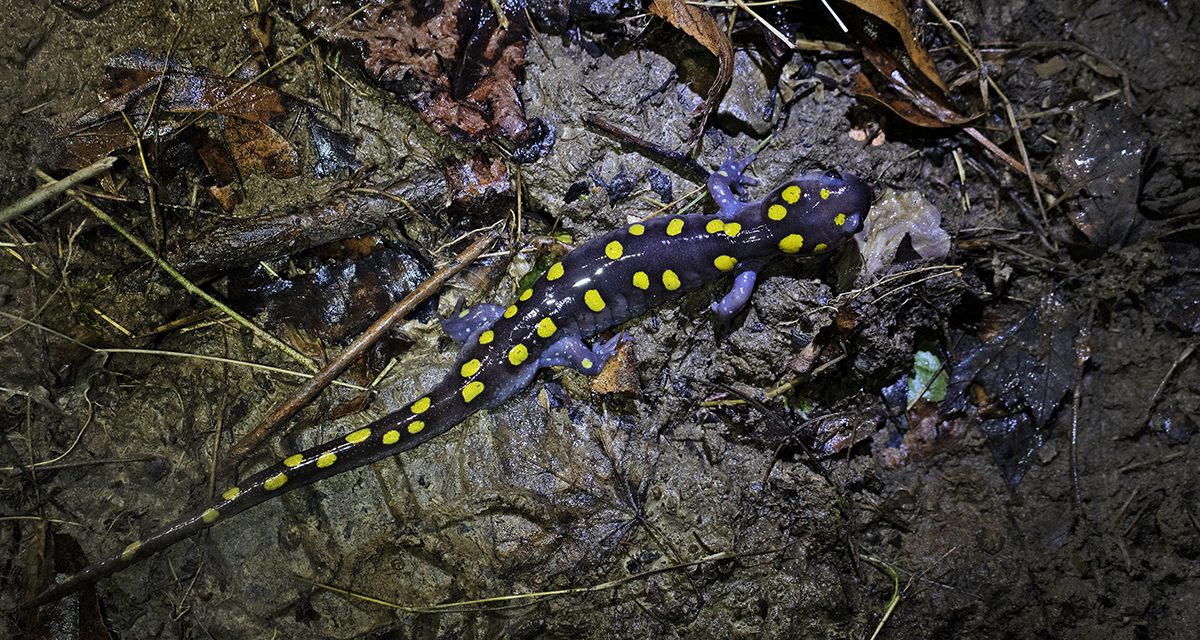LEAH CONWAY
Guest Blogger

Ohio’s state amphibian is the unmistakable and aptly named spotted salamander. This charming creature can be found in the hundreds at the right time and place, but most Ohioans aren’t particularly familiar, and for understandable reasons – the spotted salamander is nocturnal and secretive, making its home under rotting logs and underground burrows in moist, mature woodlands for most of the year. There, it will consume a variety of invertebrates while dodging skunks, raccoons, snakes, and even turtles intent on making a meal of them.
However, come early spring, these salamanders will leave the relative safety of their secluded forest refuges to journey to a vernal pool with one goal in mind: mate and produce the next generation. They’ll make this pilgrimage on warm, rainy nights under cover of darkness, and slip into the water to court, mate, and in the female’s case, lay eggs.
Though some salamanders display parental care, spotted salamanders do not, so after the eggs are deposited – clinging to a stick or other structure in the water – the adults will exit the pool and return to their forest dwellings.

Spotted salamanders display a symbiotic relationship with a species of green algae. The photosynthetic algae absorb the carbon dioxide that the growing embryos produce and convert it to oxygen, which the embryos desperately need; the outer jelly casing that helps protect the individual eggs and keep them adequately moist also decreases oxygen diffusion. The algae steps in and increases oxygen diffusion, which aids in development.

After 30-60 days in the egg stage – more or less depending on temperature – the larval salamanders hatch. At this point, they have feathery gills and four, albeit very small, working legs. They’ll take refuge under leaf litter at the bottom of their pool, feeding on small aquatic macroinvertebrates and occasionally other salamander larvae, including those of their own kind if resources are scarce! This developmental period will typically last two months, and by the end of the summer, just as their vernal pools are drying up, they’ll metamorphose into adults.

Now that they’ve dropped their gills, they no longer need to stay in water to breathe, so they begin the terrestrial phase of their lives. Still, moisture is important – if a salamander, or any amphibian becomes too dry, it won’t be able to properly absorb oxygen through its skin and may die. So, care should be taken whenever handling an amphibian by ensuring that your hands are wet from the water source the animal was found in, and by avoiding handling if you’ve recently used lotion, hand sanitizer, scented soap, or any product containing chemicals that could impact the animal’s sensitive skin. This will help ensure that animals such as the spotted salamander can reach their 20-30 year lifespan!


I would love a hike to try to see these creatures.
Excellent article!